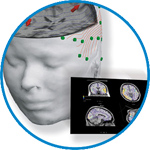- Home
- About ANT
-
Products

asa
asa is a highly flexible EEG/ERP and MEG analysis package with a variety of source reconstruction, signal analysis and MRI processing features.
.jpg)
eego mylab
The new frontier in multimodal brain research. With up to 16 kHz sampling rate, 256 EEG channels and unique software features, eego mylab gives you an unprecedented in-depth understanding of the human brain.

eego sports
eego sports offers complete freedom to collect high-density EEG data, bipolar EMG signals, and a variety of physiological sensor data, wherever and whenever required, with publish quality data in less than 15 minutes!

waveguard net
The waveguard net sets a new standard for research applications requiring high-density EEG data acquisition with quick preparation time, high flexibility, and subject comfort.

visor2
Our new and upgraded visor2 solutions integrate all the latest technologies for navigated rTMS, dual-coil navigation support, EEG-TMS recordings and pre-surgical evaluation for the highest quality in research and clinical procedures.

powerMAG ANT
The PowerMAG ANT 100 rTMS stimulator is designed for the specific needs of high-end TMS applications. Powerful high-frequency TMS as well as high precise single pulse and repetitive pulse protocols are combined in one single device.

xensor
xensor offers the solution for digitization of 3D electrode positions. xensor takes care of the whole procedure; it records, visualizes and stores positions acquired with a dedicated digitizer.

waveguard original
waveguard original is the cap solution for EEG measurements compatible with fMRI, MEG and TMS system. Use of active shielding guarantees performance in even the most demanding environments.

waveguard connect
waveguard connect EEG caps are a perfect match for hospitals and institutes aiming at reliable EEG, maximum uptime and great patient comfort! For optimal signal quality, the electrodes are made of pure, solid tin.

waveguard touch
waveguard touch is a dry electrode EEG cap. The unique Ag/AgCl coated soft polymer electrodes provide stable, research-grade EEG signals while maintaining subject comfort. The combination of these innovative dry electrodes and the industry-leading waveguard cap makes waveguard touch the best solution for dry EEG.

smartmove
smartmove allows planning of a complete TMS session ahead by defining stimulation sites based on anatomical MRI information and functional information like fMRI, PET or EEG/MEG.
Stay - References
- Support
- Events
- News
- Contact Us
You are here
Does Trans-Spinal Direct Current Stimulation Alter Phrenic Motoneurons and Respiratory Neuromechanical Outputs in Humans? A Double-Blind, Sham-Controlled, Randomized, Crossover Study
Does Trans-Spinal Direct Current Stimulation Alter Phrenic Motoneurons and Respiratory Neuromechanical Outputs in Humans? A Double-Blind, Sham-Controlled, Randomized, Crossover Study
Although compelling evidence has demonstrated considerable neuroplasticity in the respiratory control system, few studies have explored the possibility of altering descending projections to phrenic motoneurons (PMNs) using noninvasive stimulation protocols. The present study was designed to investigate the immediate and long-lasting effects of a single session of transcutaneous spinal direct current stimulation (tsDCS), a promising technique for modulating spinal cord functions, on descending ventilatory commands in healthy humans. Using a double-blind, controlled, randomized, crossover approach, we examined the effects of anodal, cathodal, and sham tsDCS delivered to the C3–C5 level on (1) diaphragm motor-evoked potentials (DiMEPs) elicited by transcranial magnetic stimulation and (2) spontaneous ventilation, as measured by respiratory inductance plethysmography. Both anodal and cathodal tsDCS induced a progressive increase in DiMEP amplitude during stimulation that persisted for at least 15 min after current offset. Interestingly, cathodal, but not anodal, tsDCS induced a persistent increase in tidal volume. In addition, (1) short-interval intracortical inhibition, (2) nonlinear complexity of the tidal volume signal (related to medullary ventilatory command), (3) autonomic function, and (4) compound muscle action potentials evoked by cervical magnetic stimulation were unaffected by tsDCS. This suggests that tsDCS-induced aftereffects did not occur at brainstem or cortical levels and were likely not attributable to direct polarization of cranial nerves or ventral roots. Instead, we argue that tsDCS could induce sustained changes in PMN output. Increased tidal volume after cathodal tsDCS opens up the perspective of harnessing respiratory neuroplasticity as a therapeutic tool for the management of several respiratory disorders.
For more information click here>>

 Read more
Read more.jpg)




